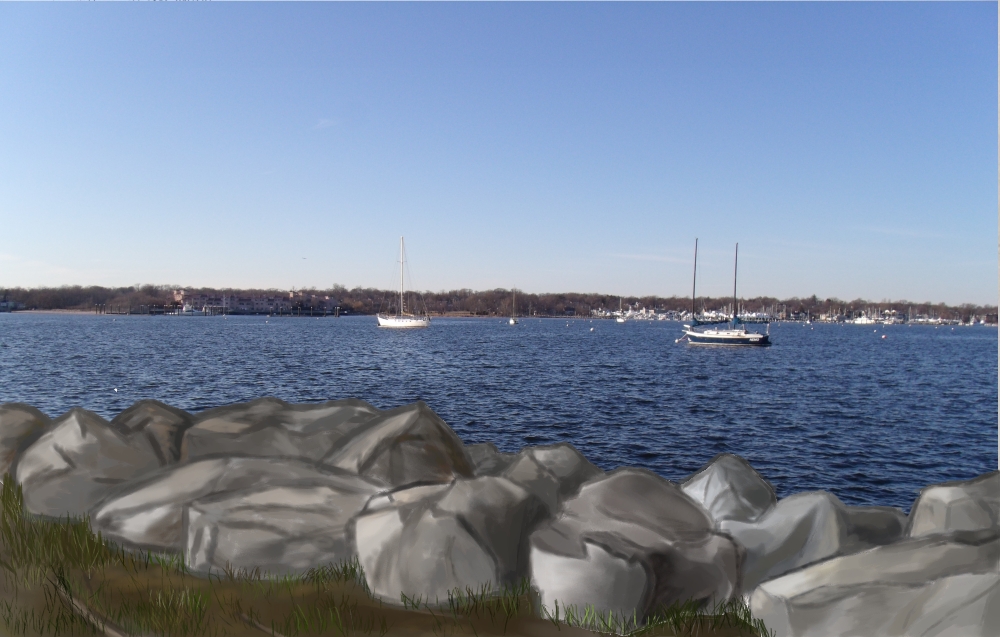For this first image, I sketched my view from Midland Beach looking out into the ocean from the pier. Once I put my sketch into Gimp, I was able to enhance it and make it look much better than the original. The first thing I did, was go to “colors” in the tool bar, and then to “Brightness-Contrast.” Using the sliders I was able to made the light gray lines from my pencil look much darker and black. It was a much darker image and I loved the new feel to the image. After this was done, I thought it would be cool to add some wildlife and objects into the image. If I were to be realistic, the image would be pretty boring, because no one likes mud brown fish or spider crabs, so I added some things that would turn Midland Beach into a gorgeous beach that you would probably only find in a tropical or southern area. The first thing I did was find an image of a blue whale, and by using Scott’s method, I was able to crop out the whale and get rid of its background. I had to first use the free select tool, and then I had to invert the image, and add an alpha channel. Lastly I had to press delete and get rid of the original background. From that point I was able to use the scale, rotate, flip, and move tool, to position the whale exactly how I wanted. I did this for all of the other objects too. You might think the cruise boat was a little unrealistic, but I actually saw an awesome ocean liner pass by when I was sketching the view. Once all this was added, I felt that I needed more color. So again using the free select tool, I selected which parts of the image I wanted colored separately. Starting with the sand, then the ocean, sky, and pier. By messing around with the color sliders I was able to add a lot of personality to the image. My final step was adding text into the image. This was simple because all I had to do was click the “text” tool, and type in the title. This image is what I wish Midland Beach could be.
For the second image, I sketched my view of the Verrazano Narrows Bridge. By this point it was getting pretty dark so the lights on the bridge had been turned on. I did not want to add so many things like I did for the first picture. I thought it would be cool to make it simple and again, unrealistic. That night, while drawing the view, the sea was almost black, the sky was a dark gray, and the sand was a dirt brown, but since this is art, I thought I would make it look as cool and pretty as possible. I did find an image of the Verrazano Bridge online with a bright red background, and I thought it would be great to make the sky a dark red, instead of a boring gray. Instead of a black ocean, I thought a lighter green would be more effective. The water closer to the bridge with the lights is much brighter than the more distant ocean. Lastly, instead of having mud brown sand, I liked the idea of a maroon. It matches the sky, but is slightly darker. The last thing to do was to add my image of the bridge and ass some text. Repeating the steps that I used to add objects in the first image, I added the bridge and the title. I also like how the final result came out because it seems as if each part was done separately and then glued on. At first I thought it was a little sloppy, but I liked it much more this way.










